Fall IDF 2005 - Day 1: Coverage of Everything
by Anand Lal Shimpi on August 24, 2005 2:31 AM EST- Posted in
- Trade Shows
Virtualization Everywhere
Intel had a relatively strong focus on virtualization technology at this year's Fall IDF:
All of the desktop virtualization demos were done on either 65nm Intel Presler processors (65nm Pentium D) or 65nm Yonah processors, both featuring Intel Virtualization Technology. Below we have a Dell Dimension PC featuring a 65nm Pentium D:
The 65nm Presler system also happened to be a BTX form factor PC.
Alongside the Presler demo systems, Intel had a 65nm Yonah demo platform:
Because it's too early to showcase Yonah notebook designs, all Yonah platforms were demonstrated in this open air fashion.
The virtualization demos were fairly run of the mill; they all used VMWare and mostly involved different virtual partitions for various users or tasks.
The demo below is of a 65nm Presler system acting as a development workstation, developing code on the right screen and testing the compiled program in various OSes each in their own virtual partition on the left screen.
This next demo featured two virtual partitions, one running business applications while the other is running a game:
Although there is a fair amount of hardware complexity in enabling virtualization, the software exposed to the user remains quite simple. Switching between virtual partitions is as easy as can be:
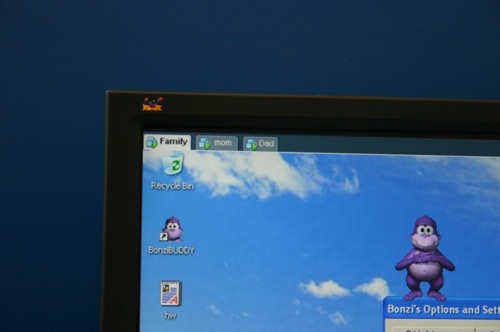


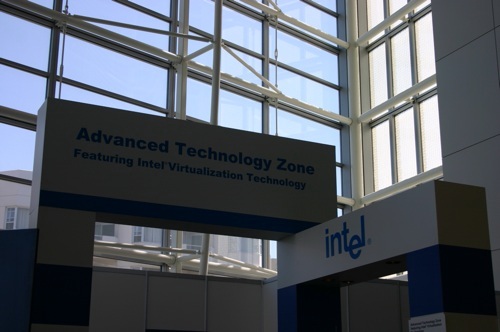

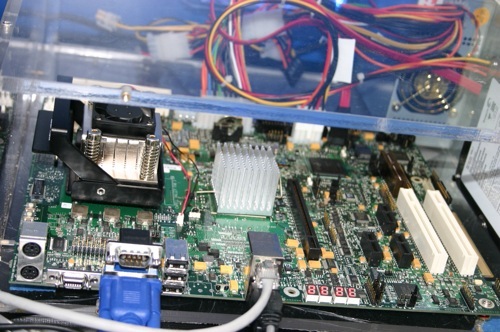
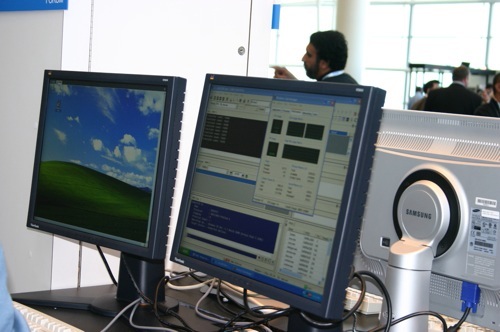
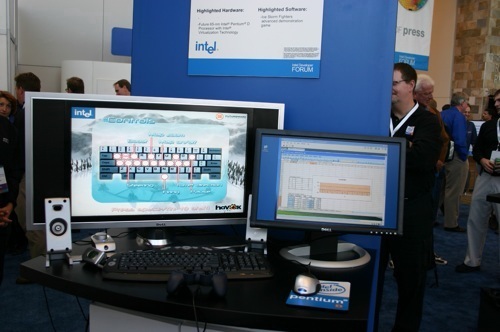








14 Comments
View All Comments
Questar - Wednesday, August 24, 2005 - link
The 5-10 year part is speculation of Anand. Intel never said it would take that long. I'll bet two years. It doesn't take 5 years to write a compiler or add a chip feature.Anand Lal Shimpi - Wednesday, August 24, 2005 - link
The Intel rep that did the demo was the one that provided the 5 - 10 year estimate. This research is in its very early stages, but the promising first results means it will probably get more support.Take care,
Anand
drpepper128 - Wednesday, August 24, 2005 - link
Is it just me or are we missing something here?To me it seems that the real power of Mitosis is that companies would not have to worry about writing code that is mult-threaded. Instead they can have single-threaded code and use the compiler to multi-thread it. This is where the real power of multi-core processors could come from. Some day when we have 100 core processors we will need something like a compiler to figure things out for us; otherwise a company's costs would skyrocket. Think somewhere along the lines of graphics cards.
JarredWalton - Wednesday, August 24, 2005 - link
I was thinking if they could get Mitosis into the chips (rather than required compiler support) then it would benefit practically *any* application. The only time it wouldn't help performance would be when your CPU was either fully loaded on every core, or perhaps if the multiple threads start using up resources that could be better used on stuff other than speculative execution.